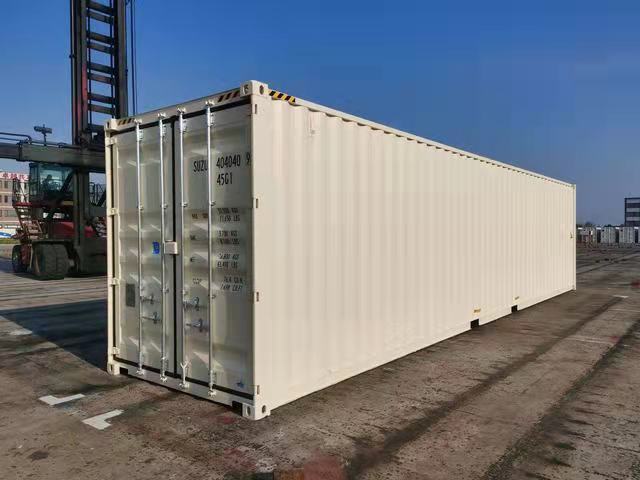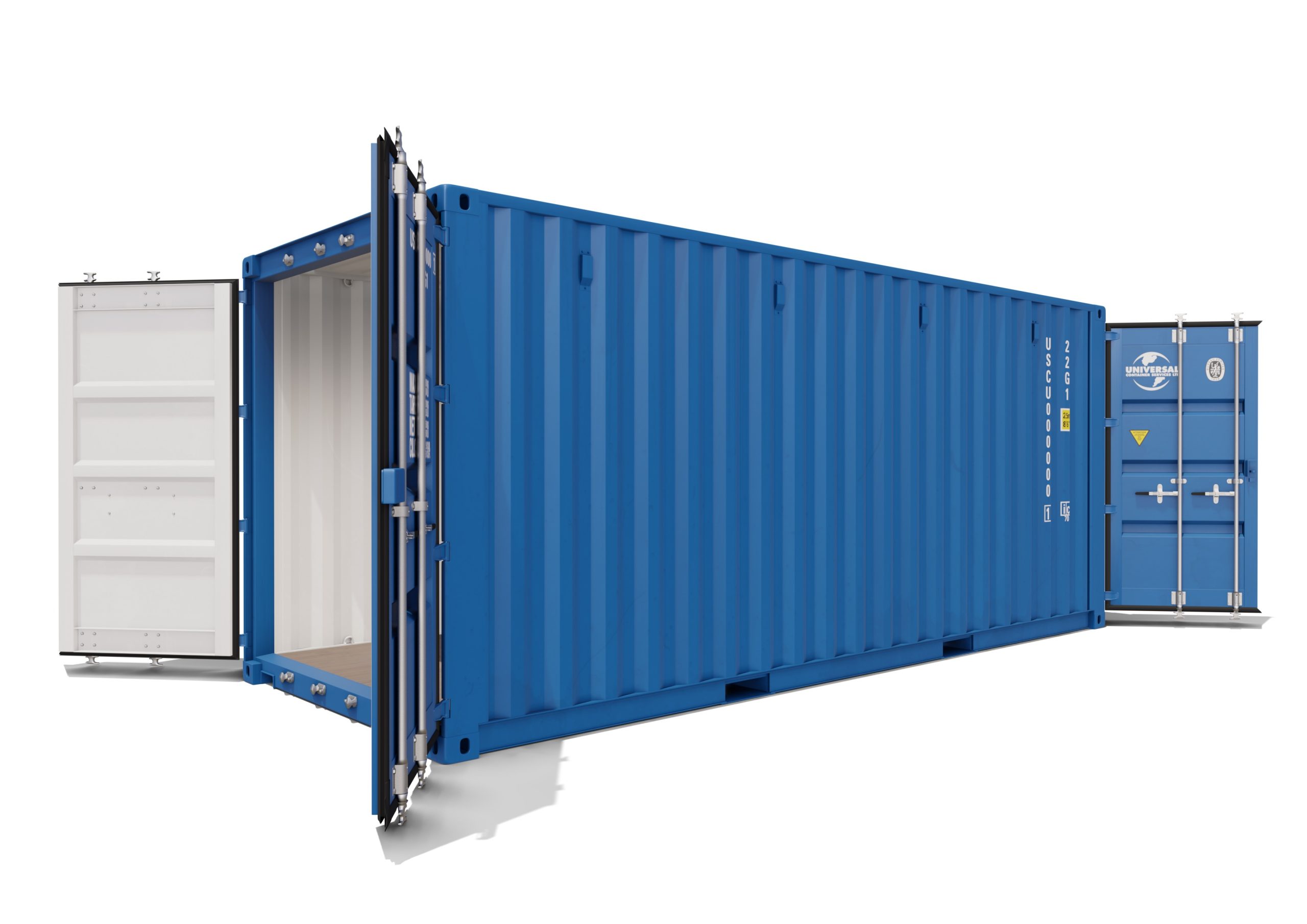10 Reasons to Buy New Shipping Container 40 x 8 x 9.6 for Modern Urban Living
10 Reasons to Buy New Shipping Container 40 x 8 x 9.6 for Modern Urban Living
Blog Article
The Ultimate Overview to Choosing the Right Delivery Container for Your Demands
When it concerns choosing the appropriate delivery container, recognizing your certain requirements is crucial. You'll want to think about aspects like dimension, type, and product to guarantee you make the very best selection. From typical dimensions to specialized alternatives, there's a whole lot to discover. And also, budgeting for both the container and any type of alterations can make a large difference. Allow's break down the essential facets to assist you find the best fit for your requirements.
Understanding Delivery Container Sizes
When you're selecting a shipping container, understanding the numerous dimensions readily available is crucial for making the best choice. Shipping containers typically can be found in standard sizes of 20 and 40 feet, but you'll additionally locate various other measurements. Understanding the dimension you require depends on what you prepare to store or transport.If you're moving smaller items, a 20-foot container could be perfect, while bigger deliveries frequently require a 40-foot container. The height can also vary; high cube containers provide additional vertical space, which can be beneficial for taller goods.Before determining, gauge your freight, and consider exactly how much room you'll require for packing and unloading. Always consider prospective future demands-- choosing a somewhat bigger container may conserve you problem down the line. Ultimately, picking the appropriate size will certainly boost effectiveness and guarantee your products are safe and secure throughout transit
Kinds Of Delivery Containers Available
There are numerous kinds of delivery containers offered, each designed for certain functions and cargo demands. The conventional dry container is functional, ideal for basic freight. If you're delivering subject to spoiling items, take into consideration a chilled container, which keeps a regulated temperature level. For extra-large items, high cube containers supply additional elevation, fitting taller loads.If you need to transfer heavy equipment or tools, level rack containers give a tough base without walls. Meanwhile, open-top containers enable very easy loading of high freight, with a removable tarp covering for protection. If you're seeking versatility, think about a collapsible container that can be easily stored when not in use.Lastly, specialized containers like tank containers are utilized for liquids, while vented containers are created for bulk freight that requires air flow. Understanding your freight type will certainly help you choose the appropriate container to fulfill your delivery needs effectively.
Product Factors To Consider for Longevity
When selecting a delivery container, the material plays an important role in its toughness. You'll desire to consider the advantages of steel versus aluminum, specifically concerning rust resistance. Recognizing these factors can assist you make a more informed selection for your delivery needs.
Steel vs. Light weight aluminum Containers
Just how do you choose between steel and aluminum containers for your shipping needs? Beginning by thinking about toughness. Steel containers are robust and deal excellent toughness, making them suitable for hefty lots and severe conditions. They resist damage from effects and are typically more economical, which can be a major variable for budget-conscious buyers.On the various other hand, aluminum containers are lightweight, which can conserve you on delivery expenses. They're easier to navigate and are a great selection if you need to transport items regularly. Light weight aluminum is normally a lot more costly and much less robust than steel. Evaluate your certain demands carefully, consisting of weight, cost, and the kind of cargo you'll be shipping, to make the appropriate choice for your circumstance.
Deterioration Resistance Elements
Picking the right product doesn't just entail weight and price; deterioration resistance plays a significant duty in longevity. When picking a shipping container, think about the environment it'll encounter. Steel containers, while strong, can corrosion otherwise properly treated. Seek alternatives with protective coverings or galvanization to enhance their life-span. Light weight aluminum, on the various other hand, provides all-natural corrosion resistance, making it suitable for seaside locations or damp conditions. Nonetheless, it can be a lot more pricey. Additionally, assess the container's use-- additional resources if it'll be subjected to chemicals or severe weather, focus on materials that can stand up to these conditions. Spending in a corrosion-resistant container currently can conserve you from costly repair work or replacements down the line. Select wisely for lasting benefits.
Adjustments and Modification Options
Delivering containers aren't simply for moving products; they can be transformed to satisfy your specific demands through numerous modifications and customization options. You can transform a standard container right into a comfy office, a temporary retail shop, and even an individual fitness center. The possibilities are virtually endless.Think about including home windows, insulation, or air flow to improve comfort. You may also consider electrical wiring, pipes, or perhaps personalized shelving to improve performance. If safety's a worry, enhanced locks can offer tranquility of mind.For visual allure, you can paint the container or add a special design to make it stick out. Do not forget flooring options-- whether you want sturdy plywood or something a lot more advanced, it can elevate the space.Ultimately, customizing your shipping container to suit your demands can enhance use and produce a special atmosphere that reflects your style.
Examining Your Transportation Needs
When it pertains to utilizing your customized delivery container, comprehending your transportation requires is key. Beginning by identifying what you'll be delivery-- whether it's hefty tools, retail products, or personal things. Each type of freight has various demands pertaining to size, weight, and accessibility.Next, consider the range and setting of transportation. Are you delivering in your area, country wide, or internationally? This influences the container's layout and functionality. If you're making use of trucks, ensure your container fits conventional measurements for easy loading and unloading.Additionally, think regarding transit conditions. Will your products require unique security from weather or temperature changes? If so, you may require insulation or ventilation features in your container.Lastly, examine exactly how frequently you'll be transferring products. Regular shipments may require a more resilient and flexible container to satisfy ongoing needs. By dealing with these factors, you'll be well-prepared to select the ideal delivery container for your requirements.
Budgeting for Your Delivery Container
Setting a spending plan for your delivery container is vital for guaranteeing a smooth buying procedure. Figure out exactly how much you can afford to invest. Keep in mind that rates can vary considerably based on dimension, condition, and type. New containers commonly set you back extra, yet made use of ones can use considerable savings.Next, think about any kind of added prices you could incur, such as transportation costs, distribution costs, and alterations. If you prepare to customize the container, factor in those expenditures too. Research various providers to compare costs and locate the most effective bargain that fulfills your needs.Don' t fail to remember to consist of any permits or laws that may put on your purchase and use the container. By plainly detailing your spending plan, you'll be much better prepared to make educated decisions, guaranteeing you get the right container without damaging the financial institution.
Maintenance and Take Care Of Long life
To guarantee your shipping container lasts for years, regular maintenance is essential. Beginning by evaluating the exterior for rust, dents, and damage. If you identify any kind of problems, resolve them immediately to avoid further damage. Tidy the container periodically, both throughout, to remove dust, particles, and moisture that can result in corrosion.Ensure the doors seal correctly and lube the hinges to prevent corrosion and sticking. If you're using the container for storage space, think about including air flow to reduce moisture and mold growth. For extra protection, apply a rust-inhibiting paint or sealant annually.If your container's situated in a severe environment, like seaside areas, you may require to boost maintenance regularity. Keep an eye on the flooring, too; any kind of signs of wear must be fixed today. With these straightforward steps, you'll extend the life of your delivery container significantly.
Often Asked Questions
How Do I Locate a Trusted Delivery Container Provider?
To locate a trustworthy delivery container provider, start by investigating on the internet reviews, requesting for referrals from good friends or market calls, and contrasting costs. Constantly inspect their qualifications and warranty they provide quality containers that meet your demands.

Can I Rent a Delivery Container As Opposed To Purchasing?
Yes, you can most definitely rent a delivery container rather than acquiring one. Many providers use rental options, which can save you money and give versatility if you just require it for a brief period.
What Allows Are Needed for Container Placement?

Are Shipping Containers Weatherproof and Suitable for Outdoor Storage Space?
Yes, shipping containers are typically weatherproof, designed to hold up against severe problems. Their robust building keeps your products protected great post to read and dry, making them appropriate for outdoor storage. Simply ensure correct air flow to stop dampness accumulation inside.
How Do I Move a Shipping Container When Purchased?

Report this page